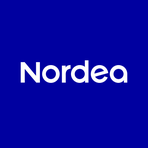Nordea Bank's Strategic Share Buyback: A Financial Dance of Confidence
April 12, 2025, 10:45 pm
In the world of finance, actions speak louder than words. Nordea Bank Abp, a prominent player in the European banking sector, is making waves with its recent share buyback program. This strategic move is not just a routine transaction; it’s a statement of confidence and a calculated step towards optimizing capital.
On April 10 and 11, 2025, Nordea executed significant repurchases of its own shares. The numbers tell a compelling story. On April 10, the bank bought back 508,499 shares at an average price of €10.68, totaling approximately €5.43 million. The following day, the pace quickened. Nordea acquired 513,268 shares at an average price of €10.58, also around €5.43 million. These transactions are more than mere figures; they reflect a strategic vision.
The backdrop to this financial ballet is a buyback program announced on March 6, 2025. Nordea set a target of up to €250 million, a bold move sanctioned by its Annual General Meeting in 2024. This program is executed under strict regulations, ensuring transparency and compliance with European laws. The buyback is not just about numbers; it’s about signaling to investors that Nordea is in a strong position.
Why buy back shares? It’s a classic maneuver in the financial playbook. By repurchasing its own shares, Nordea reduces the number of shares available in the market. This can lead to an increase in earnings per share (EPS), a key metric that investors watch closely. Fewer shares mean a larger slice of the profit pie for each remaining shareholder. It’s a win-win for both the bank and its investors.
Moreover, the buyback program serves as a buffer against market volatility. In uncertain times, companies that invest in themselves send a message of stability. It’s like a lighthouse in a storm, guiding investors to safer shores. Nordea’s actions suggest that it believes in its future, even when the market may be shaky.
As of the latest transactions, Nordea holds a substantial number of treasury shares. After the April 11 buyback, the bank has 9,353,381 shares earmarked for capital optimization and 10,300,012 shares reserved for remuneration purposes. This dual strategy highlights Nordea’s commitment to enhancing shareholder value while also ensuring that it can reward its employees adequately.
The trading venues for these transactions—XHEL, XSTO, and XCSE—indicate a broad approach to market engagement. By diversifying its trading platforms, Nordea ensures liquidity and accessibility for its shareholders. It’s a smart move, akin to casting a wide net to catch more fish.
The average prices of the shares bought back are also noteworthy. The slight variations between the two days reflect the dynamic nature of the stock market. On April 10, shares were purchased at an average of €10.68, while on April 11, the average dipped slightly to €10.58. This fluctuation is typical in trading and showcases the bank’s agility in responding to market conditions.
Nordea’s investor relations team, led by Ilkka Ottoila, plays a crucial role in communicating these developments. Transparency is key in finance. Investors want to know what’s happening behind the scenes. Regular updates and clear communication help build trust. Trust is the currency of the financial world.
The buyback program is also a strategic response to the broader economic landscape. As interest rates fluctuate and economic conditions shift, companies must adapt. Nordea’s proactive approach positions it favorably in a competitive market. It’s like a chess game, where each move is calculated and deliberate.
In conclusion, Nordea Bank Abp’s recent share buyback program is a multifaceted strategy. It reflects confidence in the bank’s future, enhances shareholder value, and serves as a stabilizing force in uncertain times. The numbers are impressive, but the implications are even more significant. As Nordea continues to navigate the financial seas, its actions will be closely watched by investors and analysts alike. The dance of finance is intricate, but with each step, Nordea is proving it knows the rhythm.
On April 10 and 11, 2025, Nordea executed significant repurchases of its own shares. The numbers tell a compelling story. On April 10, the bank bought back 508,499 shares at an average price of €10.68, totaling approximately €5.43 million. The following day, the pace quickened. Nordea acquired 513,268 shares at an average price of €10.58, also around €5.43 million. These transactions are more than mere figures; they reflect a strategic vision.
The backdrop to this financial ballet is a buyback program announced on March 6, 2025. Nordea set a target of up to €250 million, a bold move sanctioned by its Annual General Meeting in 2024. This program is executed under strict regulations, ensuring transparency and compliance with European laws. The buyback is not just about numbers; it’s about signaling to investors that Nordea is in a strong position.
Why buy back shares? It’s a classic maneuver in the financial playbook. By repurchasing its own shares, Nordea reduces the number of shares available in the market. This can lead to an increase in earnings per share (EPS), a key metric that investors watch closely. Fewer shares mean a larger slice of the profit pie for each remaining shareholder. It’s a win-win for both the bank and its investors.
Moreover, the buyback program serves as a buffer against market volatility. In uncertain times, companies that invest in themselves send a message of stability. It’s like a lighthouse in a storm, guiding investors to safer shores. Nordea’s actions suggest that it believes in its future, even when the market may be shaky.
As of the latest transactions, Nordea holds a substantial number of treasury shares. After the April 11 buyback, the bank has 9,353,381 shares earmarked for capital optimization and 10,300,012 shares reserved for remuneration purposes. This dual strategy highlights Nordea’s commitment to enhancing shareholder value while also ensuring that it can reward its employees adequately.
The trading venues for these transactions—XHEL, XSTO, and XCSE—indicate a broad approach to market engagement. By diversifying its trading platforms, Nordea ensures liquidity and accessibility for its shareholders. It’s a smart move, akin to casting a wide net to catch more fish.
The average prices of the shares bought back are also noteworthy. The slight variations between the two days reflect the dynamic nature of the stock market. On April 10, shares were purchased at an average of €10.68, while on April 11, the average dipped slightly to €10.58. This fluctuation is typical in trading and showcases the bank’s agility in responding to market conditions.
Nordea’s investor relations team, led by Ilkka Ottoila, plays a crucial role in communicating these developments. Transparency is key in finance. Investors want to know what’s happening behind the scenes. Regular updates and clear communication help build trust. Trust is the currency of the financial world.
The buyback program is also a strategic response to the broader economic landscape. As interest rates fluctuate and economic conditions shift, companies must adapt. Nordea’s proactive approach positions it favorably in a competitive market. It’s like a chess game, where each move is calculated and deliberate.
In conclusion, Nordea Bank Abp’s recent share buyback program is a multifaceted strategy. It reflects confidence in the bank’s future, enhances shareholder value, and serves as a stabilizing force in uncertain times. The numbers are impressive, but the implications are even more significant. As Nordea continues to navigate the financial seas, its actions will be closely watched by investors and analysts alike. The dance of finance is intricate, but with each step, Nordea is proving it knows the rhythm.

